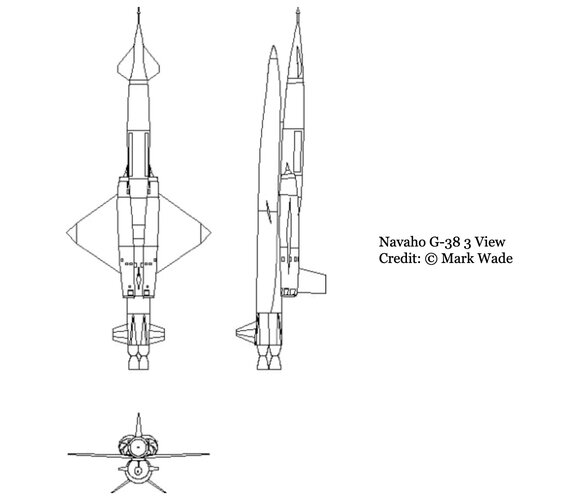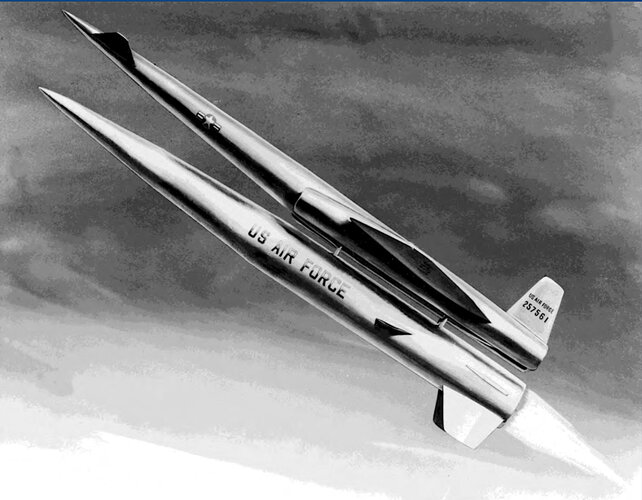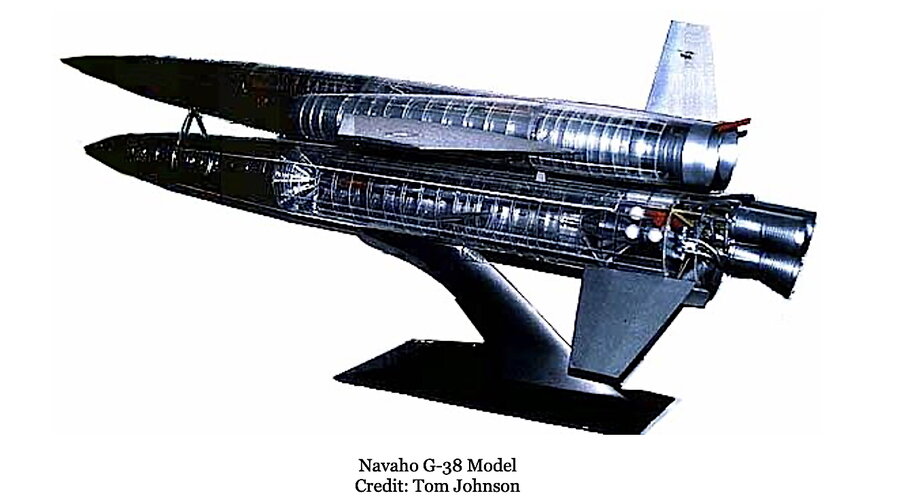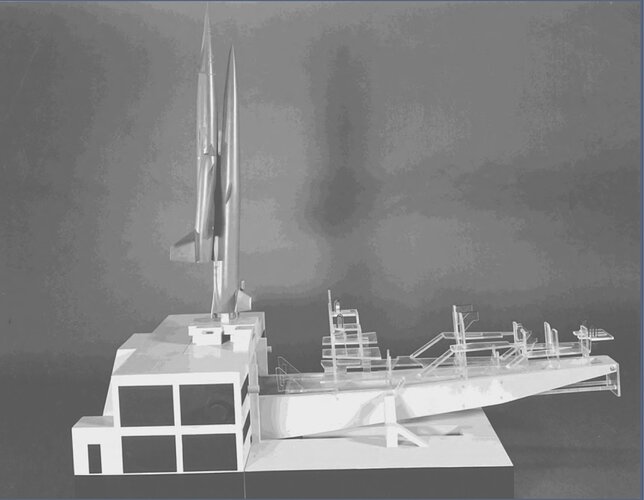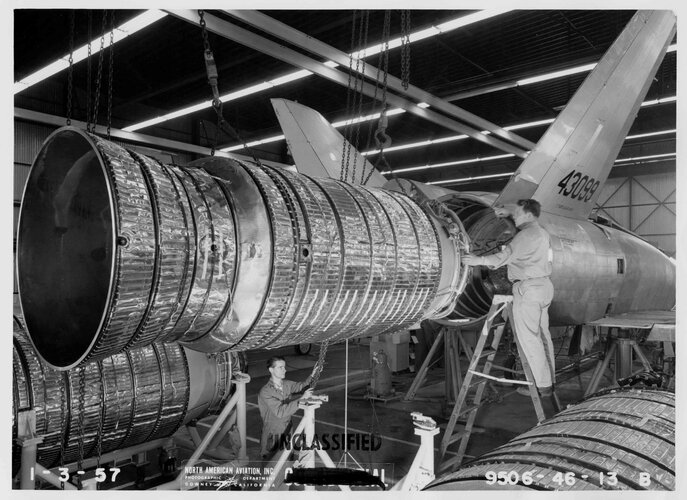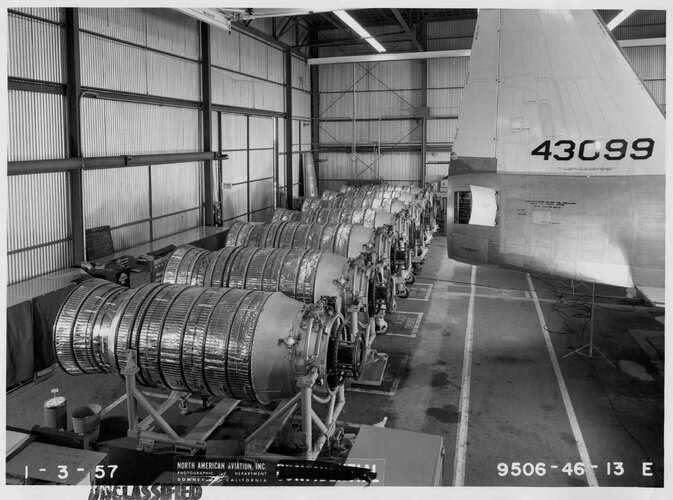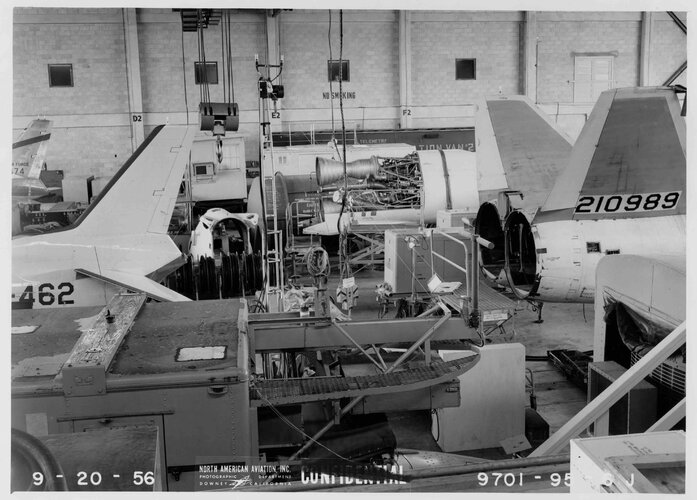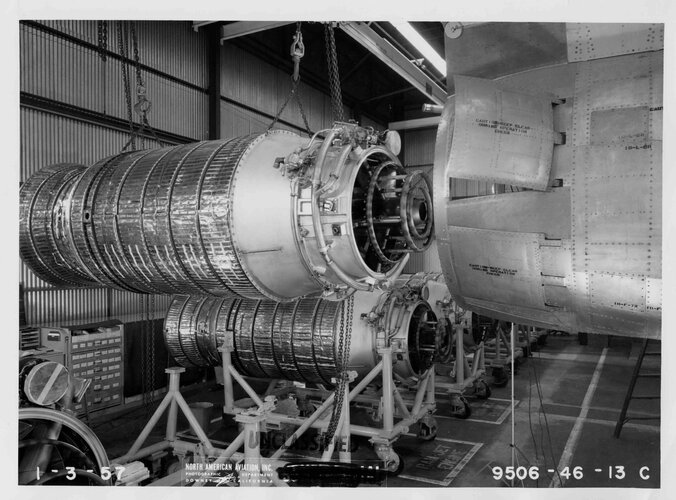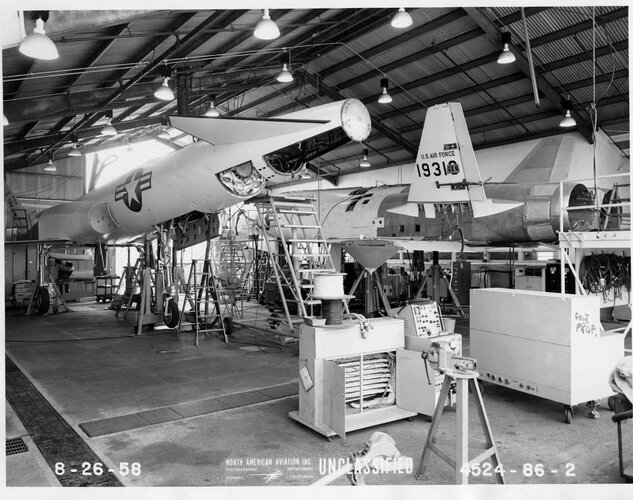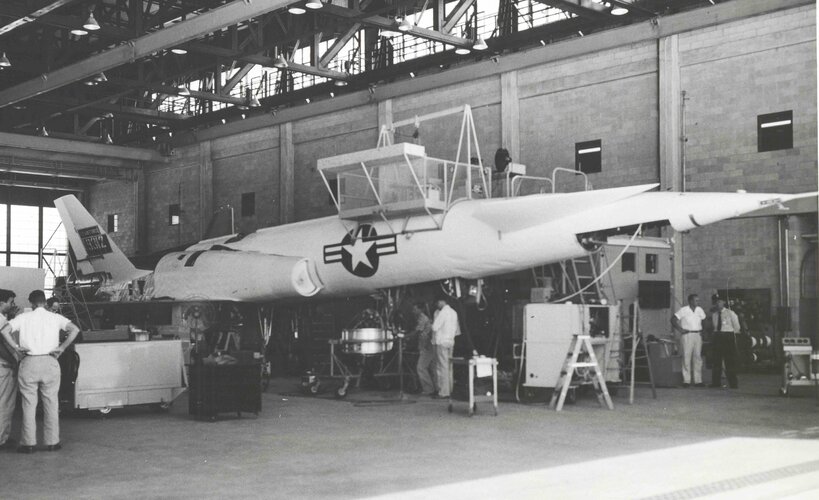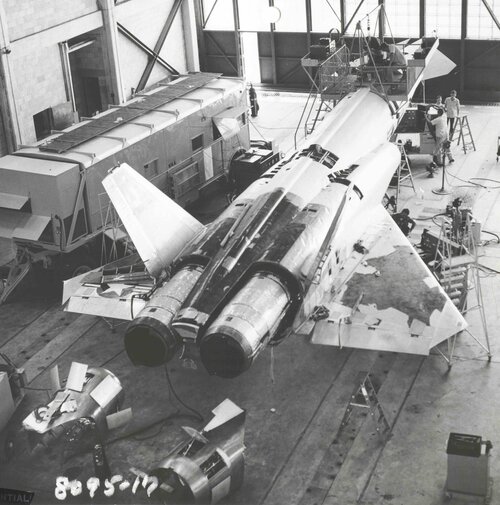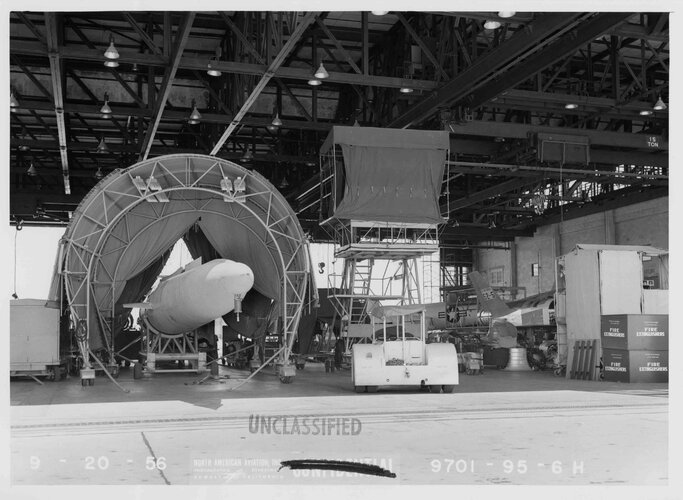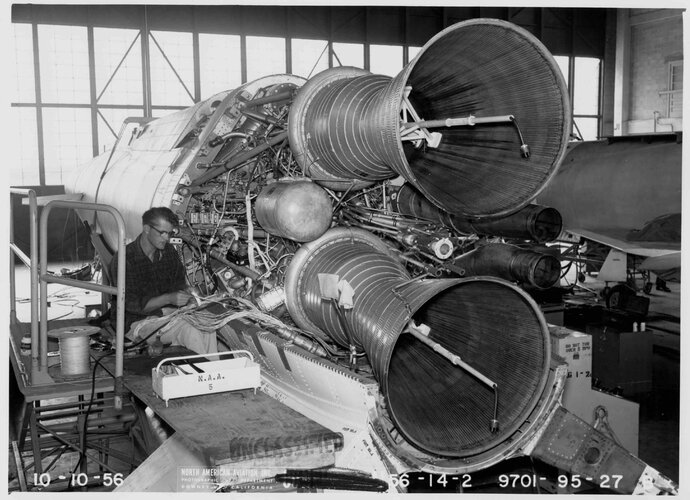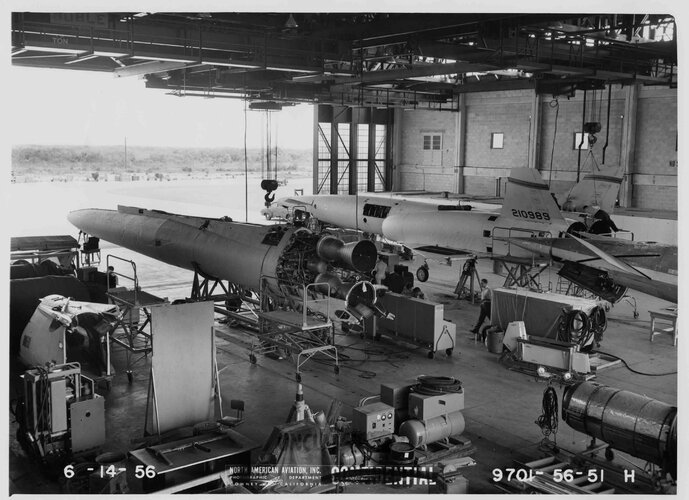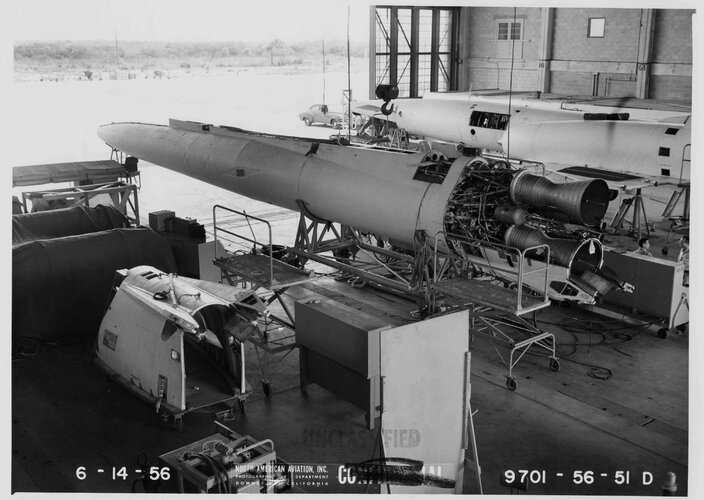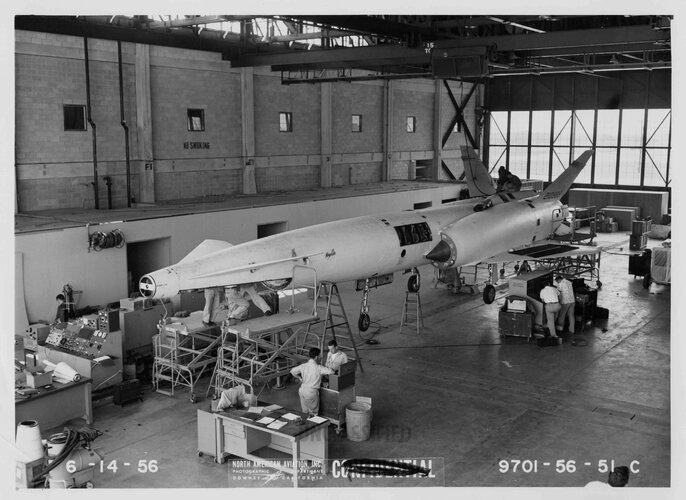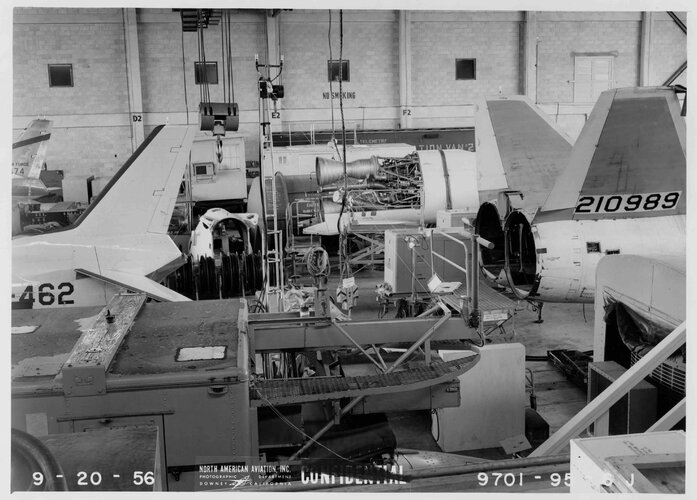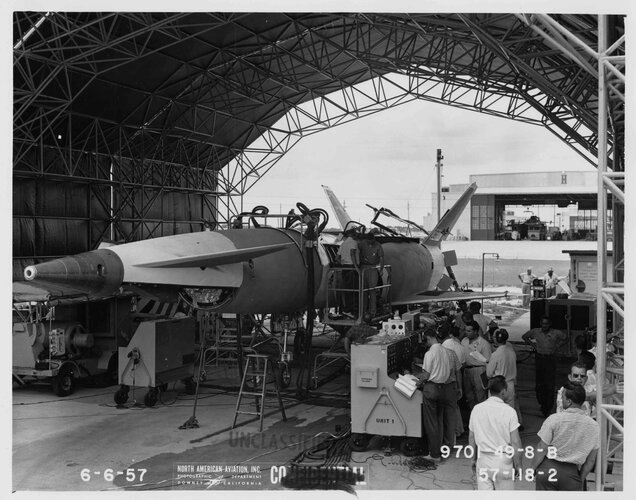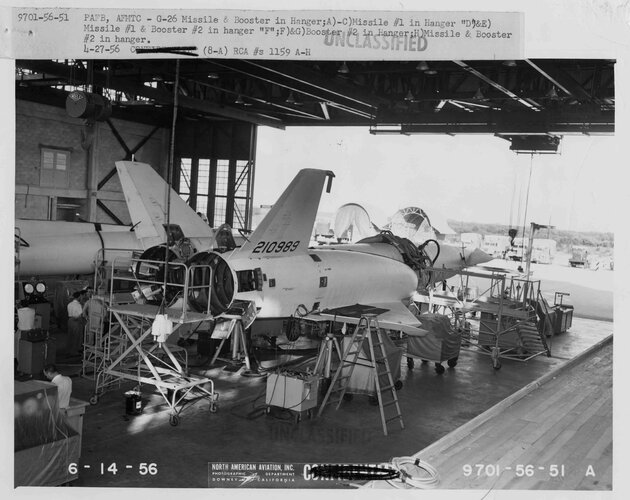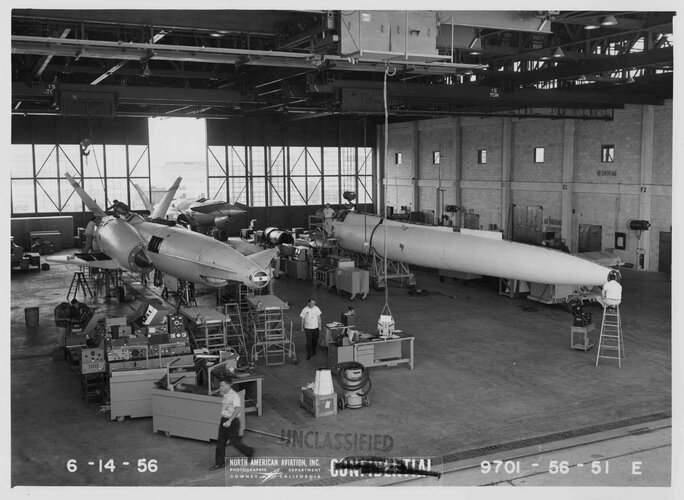Given the technical challenges, Navaho was envisioned to develop in three stages. Tthe first stage was the X-10 with turbojets to test the aerodynamics of the cruise missile design. These flew both at Edwards AFB and Cape Canaveral under remote control, and had landing gear for reuse. The second stage was the two engine rocket booster with the G-26 cruise missile. This was the stage that the program was at when it was cancelled. The final "Fly Five" flights were in the second stage of the Navaho program, employing the G-26 cruise missile and a 2 liquid engine rocket boosters, each with 120,000 lbs. of thrust. They were intended to test designs and requirements, such as successful separations at Mach 3 speed for ramjet operation. The G-26 was not intended to be the final 5,500 nautical mile, Mach 3.2 design proposed by North American. So the G-26 flight profiles were developmental test flights, never intended to be full range flights.
The planned operational design was the third stage, the G-38, which had a larger ramjet cruise missile (87.3 feet vs. G-26 67.9 length, 40.2 wingspan vs. 28.7 in the G-26, and the G-38 weighed 120,500 lbs. vs. 65,000 in the G-26). The G-38 operational version booster was planned to have three liquid rocket engines with a 90 foot length and a 7'8" diameter ( in contrast, the G-26 rocket booster was 76 feet long and 5'10" diameter with 2 rocket engines). This upgraded engine trio were slated to produce 400,000 lbs of thrust. In both the operational G-26 and G-38 design, the rocket engines were Rocketdyne LR-83 (upgraded in the G-38). The G-38 cruise missile design had twin Wright RJ-47 ramjets (with thrust upgraded from 15,000 to 20,000 lbs. of thrust each).
The G-38 cruise missile was the design that was intended to deliver the full 5,500 nautical mile range at Mach 3.2 and 70,000 feet altitude. Unlike the G-26, the G-38 cruise missile design had a single vertical tail and independently moving canards. It had been designed to carry the initial, heavy hydrogen fusion weapons (10,000 lbs. payload). It was planned to have the N6B inertial navigation system featuring transistors and etched circuit boards. And a derivative of this system served as the basis for the Polaris submarine SINS, as mentioned.
The rapid development of both intermediate range and intercontinental range missiles, along with the rather quick arrival of lighter weight fusion weapons, made the Navaho program redundant. In case of war, it would be slower in delivering weapons than the developing Atlas ICBM. And the simultaneous 1950's development programs of Thor, Polaris A-1, and Jupiter IRBMs choked competing programs of funds (e.g., Navaho, Regulus II, Triton). As well, to fly for extended periods at Mach 3+, the G-38 would have required extensive use of rare and expensive titanium for the body and wings. When the program was started in the late 1940's, few anticipated that in a decade, operational IRBMs and ICBMs would become viable. Navaho was continued in the first half of the 1950's as a hedge against unforeseen issues with ICBMs. But by the time the 2nd phase G-26 was underway, it was apparent that Navaho was no longer needed. The G-38 only got as far as the design board.


